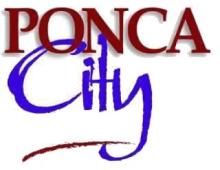Gothenburg Considering FTTH in Nebraska, Survey Responses Needed
As the "Pony Express Capital of Nebraska," Gothenburg understands the value of speed. City leaders are now investigating the possibility of bringing a FTTH network to the community. Initiative leaders are asking the town's 3,500 residents to complete a broadband survey before April 15th.
According to a recent article in the Gothenburg Times, local schools will soon be surpassing the community's current telecommunications capabilities. The school district is considering a one-to-one Chromebook initiative:
Angie Richeson, an integrated technology integration specialist and Dudley Elementary librarian, said current telecommunications infrastructure has a glass ceiling.
“We can’t get bigger or faster without changing the infrastructure,” she said. “And speed is an issue in our community.”
Community leaders also want economic development benefits that flow from a fiber network. Four Fortune 500 companies operate in Gothenberg. CenturyLink, currently providing last-mile connectivity, has no plans to upgrade.
Nathan Wyatt, Chair of the Fiber Infrastructure Committee of the Gothenburg Improvement Company (GIC) recently told the Times:
"Right now the infrastructure that exists in Gothenburg is like the dirt roads. We don't have the fastest most direct infrastructure available that would give us the fastest speeds available. And as websites get more complex. We're going to need more data and more broadband to give our residents a better experience and we also need it to recruit businesses," said Wyatt.
GIC is a coalition of local businesses working to recruit new commerce to Gothenburg. Wyatt told the Times in another article that a local provider would be ideal:



